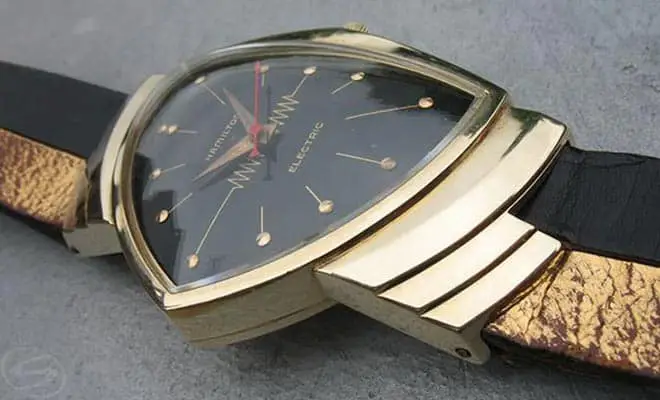The Hamilton Watch Company announced the world’s first electric wristwatch today … in 1957. On January 3, 1957, Hamilton released “The watch of the future!” upon 1950s consumers enthralled with the novel idea of a watch that would never need winding. The Hamilton 500 battery powered marvels were instantly a commercial success, a technological milestone in the history of chronometers, and forerunners to the modern day smartwatch.
Hamilton’s first electric watches kept time via a solenoid powered balance wheel oscillating at 5 beats per second. This lead to more precise electric tuning fork based watches vibrating at 360 Hz and, ultimately, to highly reliable quartz technology vibrating at 8,192 Hz. However, much like the first generation of smartwatches currently being peddled, one of the most difficult technological elements of the first electric watches was the battery. The engineers struggled for years trying to figure out how to adequately power such cutting edge tech.

The Hamilton 500 electric wristwatches were a commercial success immediately upon release. Conversely, while the Pebble smartwatch enjoyed early-adopter success via crowdfunding website Kickstarter, smartwatches as a whole have yet to find their way to the wrists of the average consumer. So, why the difference? Here is why …
W > T = 0 and W < T = 1
If the average consumer’s Work is greater because of a new Technology, the result is No Sale. Conversely, if the average consumer’s Work is lessened by a new Technology, the purchasing decision is Yes. Introduction of the electric wristwatch gave the public one less thing they had to remember each day and was a Work saver. Whereas, the current generation of smartwatches create a great deal of additional Work for early adopters. Nonetheless, as the smartwatch evolves and less effort is required to educate oneself about the tech, to set up the device, and to maintain its usefulness, eventually Work will be reduced by donning a smartwatch … but not quite yet.
Source
Hamilton Watch Company: [Company Website]
